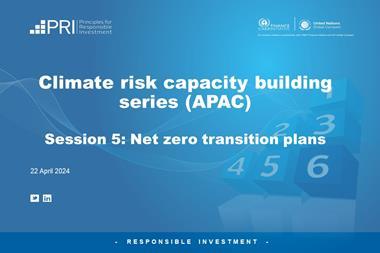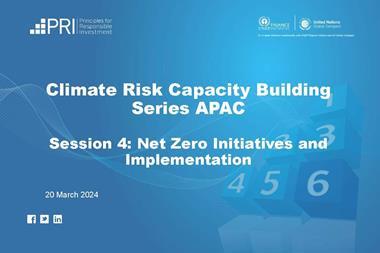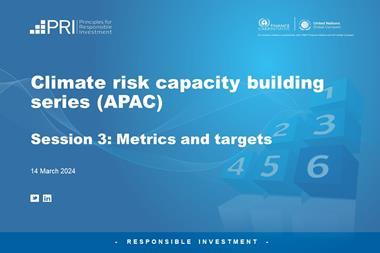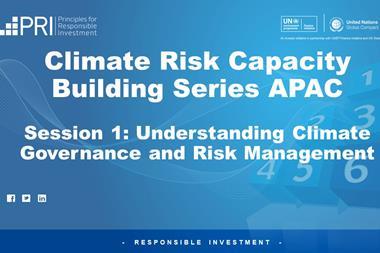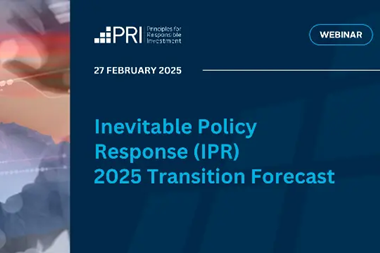Speakers
- James Robertson, Head of Asia (ex-China & Japan), PRI
- Daniel Gallagher, Senior Lead, Climate Change, PRI
- Mark Fulton, Founding Partner, Energy Transition Advisors
- Anna Iles, Associate Director, Transformation, BSR
- Dr. Steffen Hörter, Member of the Executive Board, Munich Re Investment Partners
Following the successful first webinar in the five-part Climate Risk Series (APAC) on understanding climate governance and risk, which drew over 150 participants, host and moderator James Robertson, Head of Asia ex-China & Japan), PRI, introduced the second session on strategies and scenarios for investors.
Daniel Gallagher, Senior Lead, Climate Change, PRI, provided an overview of climate scenario analysis and key considerations for investors getting to grips with the practice. “Climate risk is not linear, and it may keep growing,” said Gallagher, observing that “scenario analysis has a lot of potential to… manage future risk”.
He addressed the question of what investors should consider in scenario analysis, including the process of: defining scenarios; evaluating the resilience of their plans; and identifying ways to make these plans more robust in the face of climate-related risks and opportunities.

We live in a time of increasing disruption, which has impacts on the operating context for businesses, observed Anna Iles, Associate Director, Transformation at BSR. Iles shared climate scenarios linked to policy action and the global policy landscape on mandating climate reporting, noting why climate scenario analysis is important for organisations. She also provided practical real world examples of how climate risk scenario analysis might work, such as investing in healthcare in Indonesia and finance in India.
The Inevitable Policy Response’s (IPR) forecasting process and its application for the long-term thinking of investors around the transition to net zero was central to remarks from Mark Fulton, Founding Partner of Energy Transition Partners. Fulton said IPR’s models are looking at “what we actually think policymakers are going to do, and what technology is capable of…” which is then input into the forecasting models to reveal how close we are to achieving 1.5 degrees.
He noted that social tipping points over 1.5c are likely to cause policy makers to try and use NETs to get back to 1.5c. Fulton also shared a summary of IPR 2023 forecasts across energy, nature and land use, and examined policy gaps in Asia to phase out existing and new coal production.
Dr. Steffen Hörter, Member of the Executive Board, Munich Re Investment Partners, remarked on investor action on scenario analysis, including the process of modelling climate change scenarios into investments, and the importance of considering a variety of views in scenarios, variables, and in the assessment phase. Dr. Hörter also shared several case studies, notably: Munich Re Investment Partners’ classification/evaluation of corporates, including short-term transition capabilities, longer-term net zero pathway alignment, and quantifying exposure to physical climate risk.
Climate Risk Series (APAC) replays and dates on BrightTalk:
- Governance and risk (8 February)
- Strategies and scenarios (29 February)
- Metrics and targets (14 March)
- Net zero initiatives and implementation (20 March)
- Net Zero Transition Plans (22 April)
Downloads
Climate Risk Series (APAC) Session 2: PRI presentation
PDF, Size 0.56 mbClimate Risk Series (APAC) Session 2: BSR Climate Scenario Analysis presentation
PDF, Size 1.33 mbClimate Risk Series (APAC) Session 2: Energy Transition Advisors presentation on IPR
PDF, Size 3.67 mbClimate Risk Series (APAC) Session 2: Munich Re Investment Partners presentation
PDF, Size 1.18 mb


